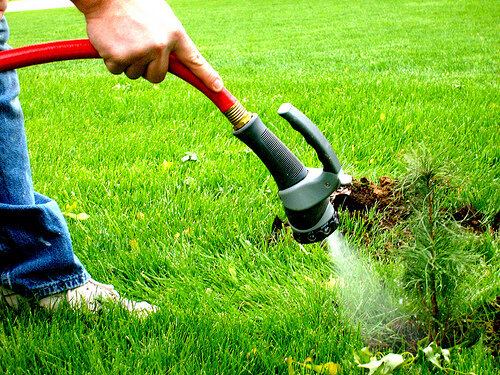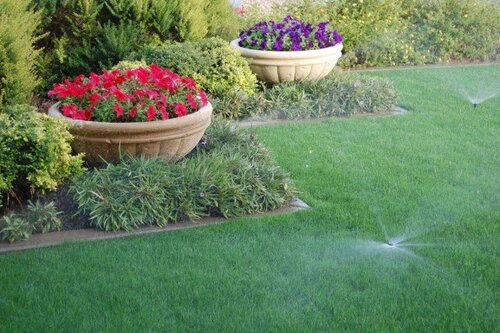I, for one, cannot believe it is the first of June already. This year is really flying by. This is the month for picnics, vacations, family reunions, and for just enjoying the outdoors in general. I truly hope we can get back to these ‘old’ traditions as our new norm.
If you are new to planting or gardening this year, please stay in touch when you have questions so we can help you through your new experiences.
The hot days of summer are stressful to every living creature, including your plants. Not only does mulch hold in moisture, it also keeps the soil cooler, so your plants will be less heat-stressed.
One of the most common questions that we receive at this time of year is, “How much do I water my ______?” I will explain some basic guidelines here:

Vegetables and Bedding Plants planted in the ground: established plants need at least one inch of water per week. Check the soil around the plants, when it is dry one inch down, it’s time to water.
Container Gardens and Hanging Baskets: check your containers every day for water. Either test the soil by touch or lift the pot to check its weight. Most baskets and many containers will need to be watered once a day, depending on the weather. I suggest you fertilize once a week.
Perennials: newly planted perennials need daily watering until established, at least two weeks, depending on weather. After they show signs of new growth, apply a one inch per week rule.
Trees and Shrubs should be watered every 4-5 days for the entire first year after planting unless rainfall is abundant. Place the end of your hose next to the base of the plant and let the water trickle very slowly for about two hours. This will allow the root zone to become thoroughly saturated.
Established Lawns: your lawn should be watered when the grass blades don’t bounce back after being walked on. One inch of water per week should keep your lawn green and healthy.

Newly Seeded or Sodded Lawns: for better germination, I suggest you mulch grass seed with straw as soon as it is planted. Once seed has germinated or sod has been laid, they must not be allowed to dry out. Water daily with a sprinkler until there is good growth. Once established, go back to the one inch per week rule.
So, continue to enjoy your outdoor spaces and make relationships with your plants!
They can give you so much in return!
Sandi Hillermann McDonald

